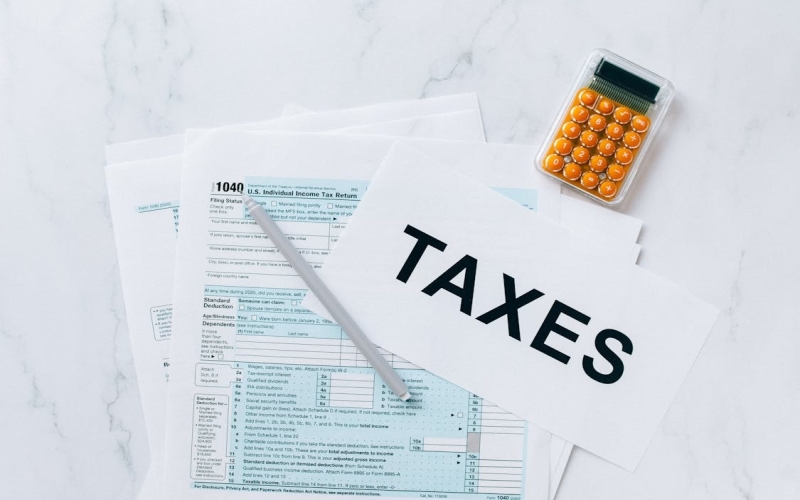Investing in annuities can be a prudent strategy for securing a steady income stream during retirement. Among the various types of annuities available, non-qualified annuities are popular for those looking to invest after-tax dollars.
A specific type of annuity is the 7-year non-qualified annuity, which commits your funds for seven years in exchange for deferred tax benefits. However, while these annuities offer tax advantages, they also come with specific tax implications that investors must consider.
In this article, we’ll dive into the tax aspects of 7-year non-qualified annuities, providing a comprehensive overview to help you make informed decisions.
What Are Non-Qualified Annuities?
According to 1891 Financial Life, non-qualified annuities are financial products purchased with after-tax dollars. According to Investopedia, this means that the funds used to buy them have already been taxed. Non-qualified annuities do not provide an upfront tax deduction, in contrast to qualified annuities, which are funded via IRAs and 401(k)s.
The primary advantage of these annuities is the tax-deferred growth on the investment earnings. This allows interest and earnings to accumulate without immediate tax liability. This feature means the investment can compound over time, potentially leading to significant growth, as taxes are only paid upon withdrawal.
Another notable benefit of non-qualified annuities is their lack of contribution limits. Unlike qualified retirement accounts, which have annual contribution limits, non-qualified annuities do not restrict how much you can invest. This makes them an attractive option for individuals who wish to invest substantial amounts of after-tax dollars for tax-deferred growth.
For more detailed information on non-qualified annuities and how they can fit into your financial planning strategy, click here.
Taxation of Earnings in Non-Qualified Annuities
The earnings portion of a non-qualified annuity is subject to taxation upon withdrawal. It is taxed as ordinary income, not at the lower capital gains rate. The IRS employs a Last-In-First-Out (LIFO) method to determine the taxable portion of any withdrawal, meaning that earnings are considered withdrawn first.
This can result in the initial withdrawals being fully taxable until all the earnings have been depleted and the principal begins to be withdrawn. For high-income individuals, this taxation method can lead to a higher tax burden in the early years of distribution.
Penalties for Early Withdrawal
According to the IRS, withdrawing funds from a non-qualified annuity before age 59½ typically incurs a 10% early withdrawal penalty on the taxable portion. This penalty is in addition to the regular income tax owed on the withdrawal, making early access to funds costly.
There are, however, exceptions to this rule, such as withdrawals due to disability or under substantially equal periodic payments (SEPP). Knowing these exceptions can help you avoid unnecessary penalties and manage your annuity funds more effectively.
Tax Reporting and Documentation
Proper tax reporting is crucial for managing the tax implications of non-qualified annuities, and each withdrawal requires careful documentation. Forbes states that the insurance company will send you a Form 1099-R annually, detailing the taxable amount of your distribution.
This must be accurately reported on your tax return. Misreporting this information can lead to penalties and interest charges from the IRS. This makes it essential to maintain detailed records of contributions and withdrawals. Understanding the specific tax forms and ensuring they are filled out correctly can prevent potential issues and ensure compliance with tax regulations.
Strategies for Minimizing Tax Impact
To minimize the tax impact of withdrawals from non-qualified annuities, consider planning the timing and amount of withdrawals strategically. This can help you remain within a lower tax bracket. Another effective strategy is to spread withdrawals over multiple years to avoid a significant tax hit in any single year.
Consulting with a financial advisor or tax professional can help identify other tax-efficient strategies tailored to your financial situation. For instance, using a 1035 exchange to transfer funds into another annuity without triggering a taxable event can be beneficial in certain scenarios. This can help defer taxes further and optimize your financial planning.
FAQs
Is it possible to cash out an annuity that is non-qualified?
Yes, an annuity that is not qualifying can be cashed out. Upon withdrawal, any earnings will be liable to income tax.
What is the cost of taking a withdrawal from an annuity that is not qualified?
A 10% early withdrawal penalty on profits may be imposed if you take money out of a non-qualified annuity before the age of 59½. The earnings will also be subject to ordinary income tax.
How should a 1099 document be processed?
Check a 1099 form for accuracy before processing it, then report the income on your tax return. Include the income listed on the 1099 form on the appropriate line of your tax return, typically using Form 1040.
In conclusion, 7-year non-qualified annuities present a valuable opportunity for tax-deferred growth using after-tax dollars. However, the tax implications, including ordinary income taxation on earnings and potential early withdrawal penalties, necessitate strategic planning. Investors should carefully document and report withdrawals to avoid IRS penalties.
Effective tax management strategies, such as spreading out withdrawals and utilizing 1035 exchanges, can mitigate tax burdens. Consulting with financial professionals is essential to navigate the complexities and optimize the benefits of non-qualified annuities.

